|
Advertisement / Annons: |
My astronomy project:
|
Content:
Note: |
1: Introduction to stepper motor focus
Note: So now it was time to grab this desirable wish, a stepper motor focuser. Have thought long about this. Shall I build everything from scratch, or try to find something used? I'm not thinking about the price of 300 Euro and upwards. But in one of the topics at a forum I have written, I received advice from Stoffe about a new focus motor. USB Focus They manufacture this unit and it seem to be from France. There are three different stepper motors with different torque. 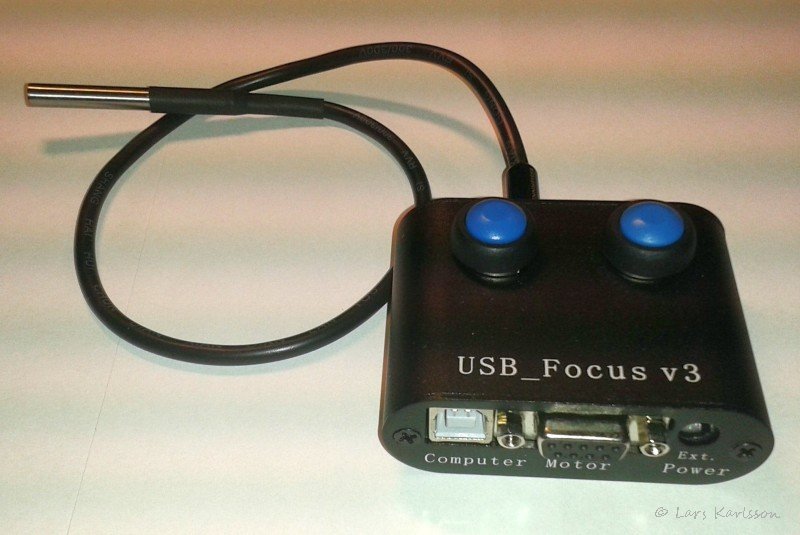
I bought one and this is how it looks. The driver box, one can choose between external or USB power supply with a switch, 230 volt adapter included but none of 12 volts power, this stepper motor requires 8 volts externally, but that is the same voltage as the camera power I have and they maybe can share the same power supply. If you choose to feed it internally from USB cable through the control box, the engine must cope with 5 volts and thus less torque. A thermometer with stainless house came in the kit and it's connected with the 3-pole jack plug. 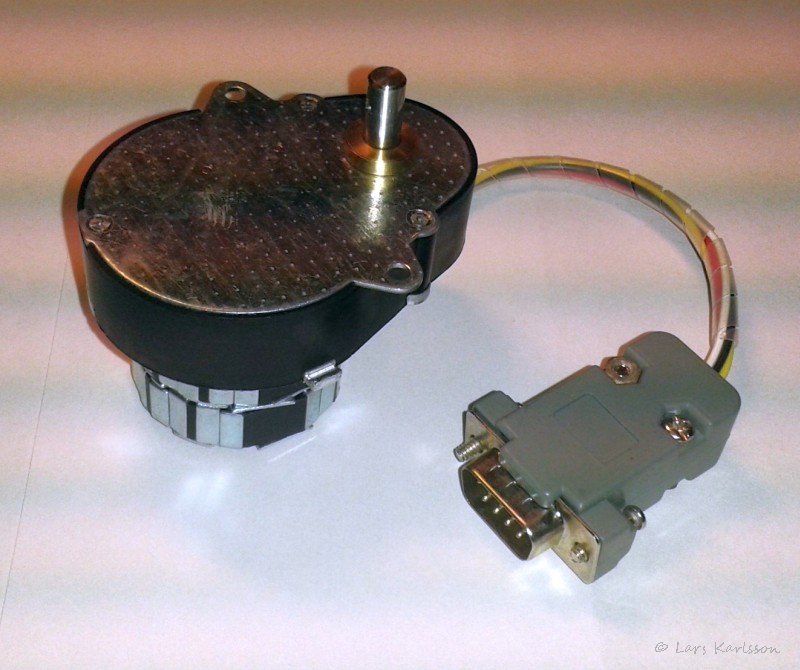
The stepper motor, if purchased separate it cost 100 Euro but in the package it's included and rather cheap. The gearbox is marked 250/3 maybe that's the ratio, it seems so. A certain backlash arises always with gearboxes but torque will be good, and the focus remains in the rest mode. The ASCOM driver also has a function of backlash compensation. The only thing that gives little fears are the cable attachment to the stepper motor, should probably be strengthened if they should survive. 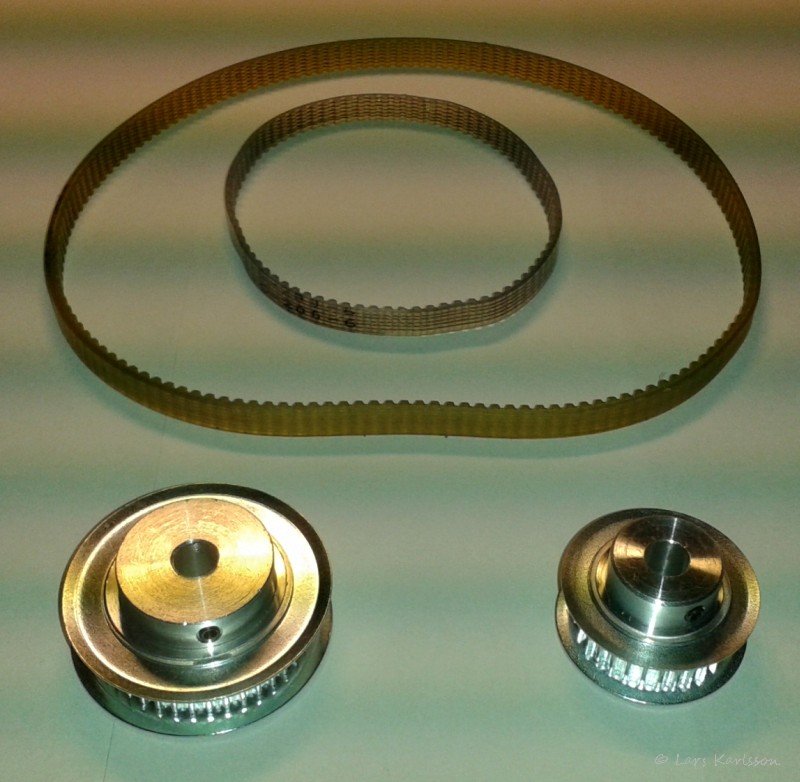
To this I bought a pair of pulleys and a pair of timing belts. The focus motor must be used in two different configurations. If it works good I maybe order one more motor so I don't have to move the motor between the telescopes. I found these pulleys at a German company. The pitch of the toothed belt is 2.5 and 6 mm width, the belts are specified down to minus 30 C degrees. The big pulley has 40 teeth and the smaller has 30 teeth. Next time I order pulleys I shall use the GT2 standard that is common in 3D-printers and easier to find. 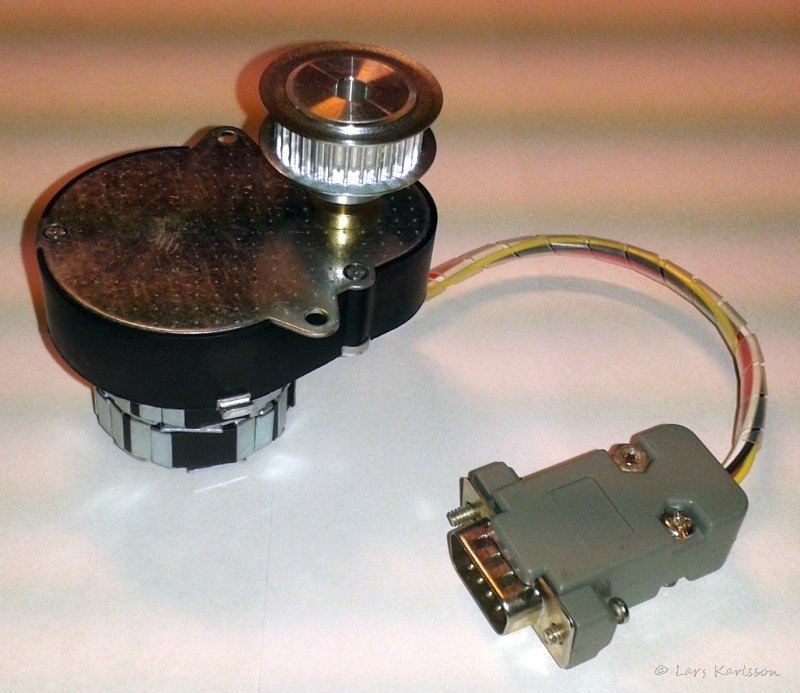
This was a bit of luck that both motor's gearbox shaft and the telescope's focuser shaft has a diameter of 6 mm and the pulley fit directly. Here how it looks with the smaller pulley mounted on the gearbox. 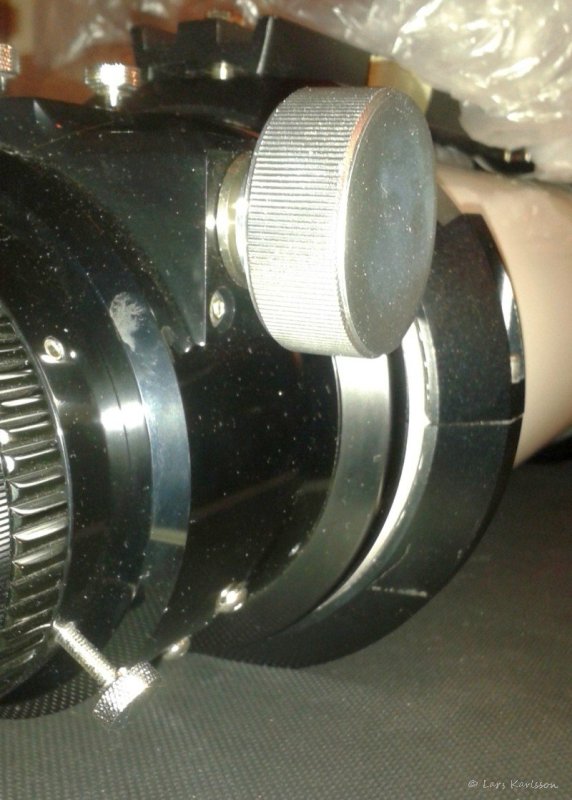
I have chosen to put the second pulley direct on the focus axis that doesn't has the reducer of 1:10. 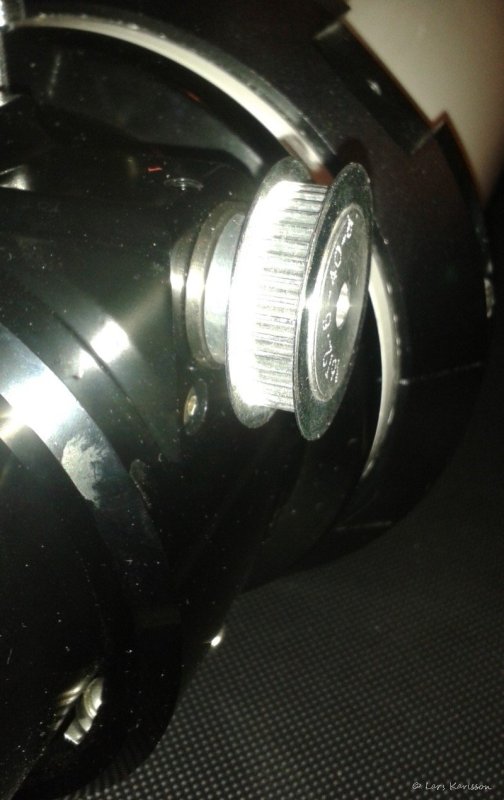
Here are the pulley of 40 teeth mounted. If I counted correctly the motor shaft after the gearbox rotate 8 revolutions at 65,000 steps, which is the max. With the pulley combination of 30/40 it is the equivalent of one end position to the other in the telescope's focus range. 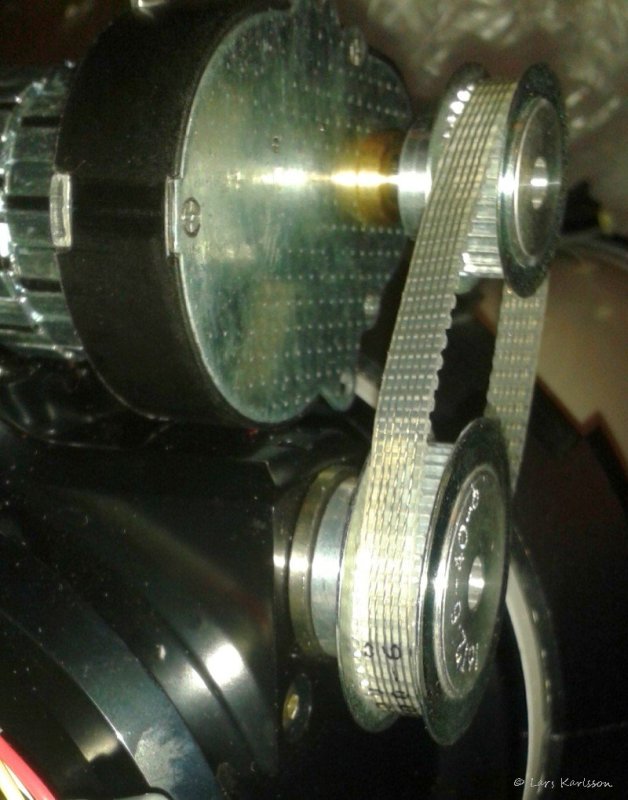
Testing the stepper motor in it's proposed place, I choose this construction before the direct coupling to get a more compact installation, I do not like when the motor hang out on the side of the telescope. It remains one problem, how do I manufacture a mounting bracket for the motor? There are not many screws on the telescope to take advantage of and I do not want to drill holes in the telescope, or? 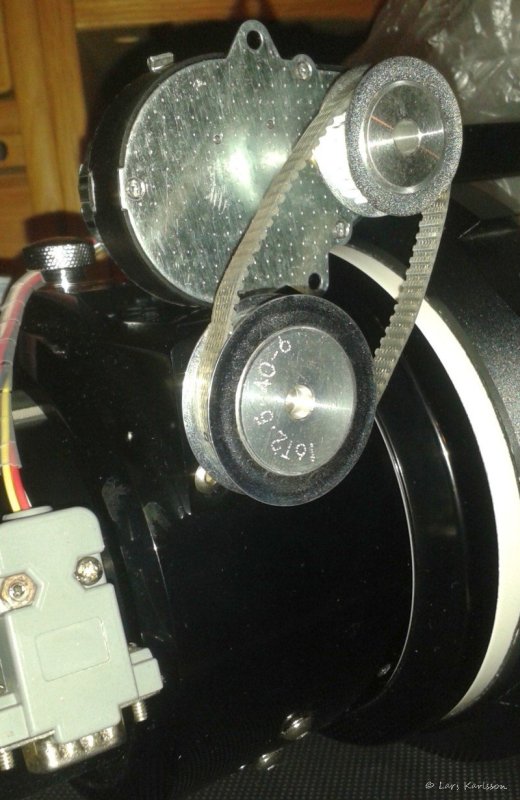
This view from a different angle. One problem I anticipate will occur, will focus slip in the friction clutch when the telescope is pointing upwards? Has drawn the friction clutch very tight, but are likely to be problems anyway, rack and pinion had probably been better. 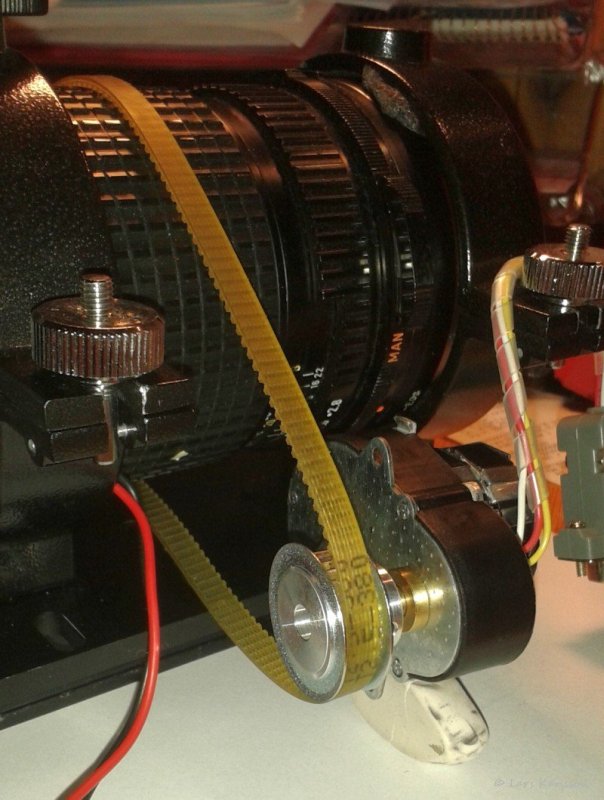
The second telescope the motor focus shall serve is a telephoto lens of 165mm focal length which will be the wide field setup (full frame). Here, the longer timing belt is used and it is wrapped around the lens focus ring, and should be tightened moderately, hard to get enough friction. 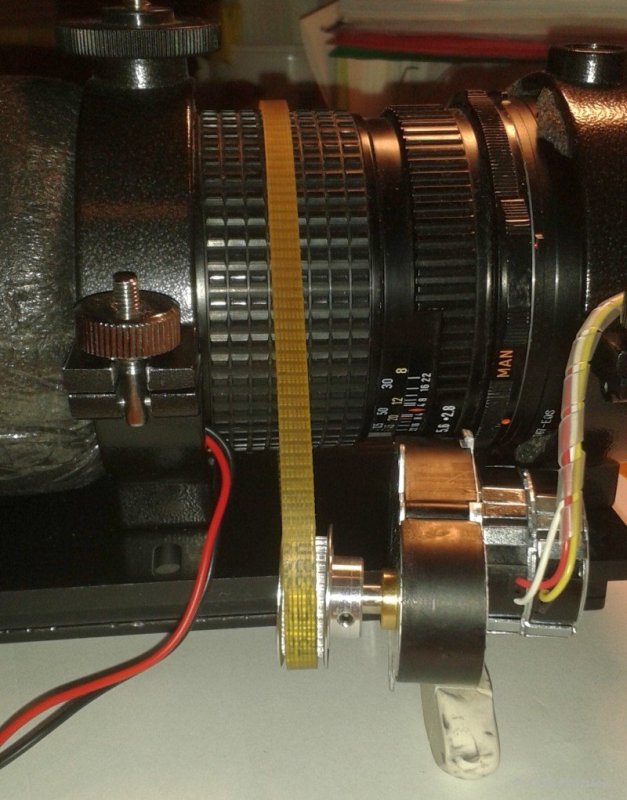
Here too an angle bracket will be made, quite easy here as there are mounting holes in the right places to fit it with. With all these parts, I have came a long way, it felt good to get this finished so I can concentrate me on the final goal. I have had time to test-drive the stepper motor, some problems with the program but Vincent at USB-Focus struggling to solve it on and it is not worse than that it should be possible to use it already now.
|
|